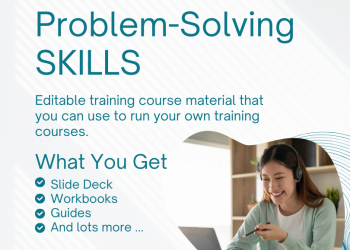The steps to overcome overthinking win again.
We hate to break it to you, but overthinking is a common issue that can negatively impact both individuals and organizations. If you haven’t already, it’s about time you took these eight steps to stop overthinking.
And if you’re still not sure what overthinking is (or the factors that can contribute to it), it’s especially important to be clear on the impact of overthinking at work.
This guide will provide background information on overthinking, discuss its impacts, and outline eight actionable steps to stop overthinking at work.
What Is Overthinking?
Excessive, repetitive thoughts about an issue characterize overthinking. It involves dwelling on possible outcomes, analyzing details excessively, and ruminating on negative what-if scenarios.
Background On Overthinking
Many factors can contribute to overthinking at work, including:
- Perfectionism – the desire to get everything exactly right. This can lead to over-analyzing details.
- Lack of confidence – doubting one’s abilities and decisions. This can prompt second-guessing.
- Anxiety – feeling worried about possible problems arising. This can fuel negative thinking patterns.
- Stress – when under high pressure, the mind can get stuck in thought loops.
The Impact Of Overthinking
For individuals, overthinking can:
- Cause significant stress and anxiety.
- Reduce productivity and focus.
- Lead to analysis paralysis, where no decisions get made.
- Negatively impact work performance and morale.
For organizations, overthinking employees can:
- Delay progress on projects and tasks.
- Waste time agonizing over minor details.
- Require extra reassurance and supervision.
- Contribute to a stressful, anxious work culture.
8 Steps To Stop Overthinking At Work
1. Recognize Overthinking Patterns
The first step is to identify when overthinking is happening. Common thought patterns include:
- Excessive worry about the future
- Ruminating on past mistakes
- Picking apart minor details
- Mentally rehearsing conversations
Noticing when these thought loops occur can help interrupt the overthinking cycle.
2. Challenge Unhelpful Thoughts
Once an overthinking pattern is identified, evaluate whether the thoughts are overly negative or unhelpful. Ask yourself:
- Is this thought exaggerated or unrealistic?
- Am I assuming the worst-case scenario?
- Am I over-analyzing minor details?
Challenging thoughts in this way can reveal overthinking tendencies.
3. Focus on Facts
Ground yourself in objective facts, not fearful assumptions. Stick to the evidence and data available. This can calm overthinking and provide perspective.
4. Practice Mindfulness
Mindfulness involves focusing on the present moment in a non-judgmental way. Simple mindfulness exercises like breathing techniques and meditation can direct your attention away from overthinking.
5. Set Time Limits
Give yourself a defined period to consider options or make a decision. This prevents endlessly mulling over ambiguities. If time’s up and no conclusion is reached, move on.
6. Talk It Out
Verbalizing thoughts with a trusted coworker can help identify irrational thinking patterns. Their perspective can challenge assumptions fueling your overthinking.
7. Prioritize Tasks
Have clearly defined priorities and stick to completing high-importance tasks first. This prevents wasting time overthinking low-impact issues.
8. Take Action
Overthinking often arises from a perceived lack of control. Taking small actions gives a sense of control and can reduce overthinking. Even simple steps like making a to-do list can help.
Conclusion
Left unchecked, overthinking can significantly harm productivity and well-being. Implementing these eight steps can help minimize overthinking patterns at work.
The key is to recognize unhelpful thought loops early, challenge pessimistic thinking, and focus mental energy on constructive action.
With practice, overthinking tendencies can be managed effectively. This allows you to thrive in your role and contribute optimally to your organization.
We encourage you to explore our frequently asked questions, special offers, and our ready-made training course material.
With 30+ years of training experience, I founded Oak Innovation (oakinnovation.com) in 1995. I help busy training professionals and business managers deliver better training courses in less time by giving them instant access to editable training course material. I received my Bachelor’s and Master’s degrees from University College Cork. I hold qualifications in Professional Development And Training from University College Galway. Clients include Apple, Time Warner, and Harvard University.



















